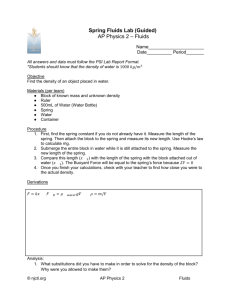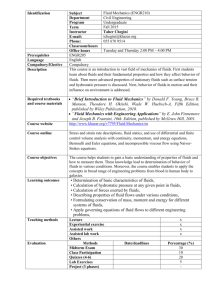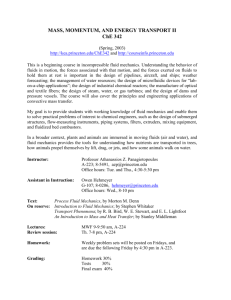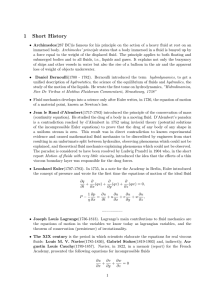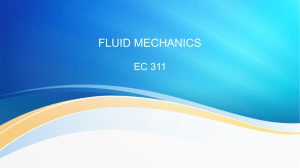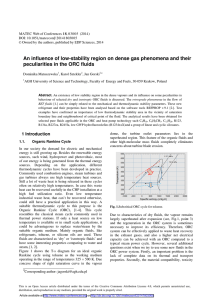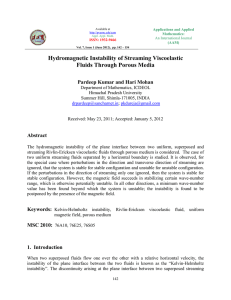Electrorheological Fluids – Theory and Experiments Research Candidate: Peter Sommerkorn
advertisement
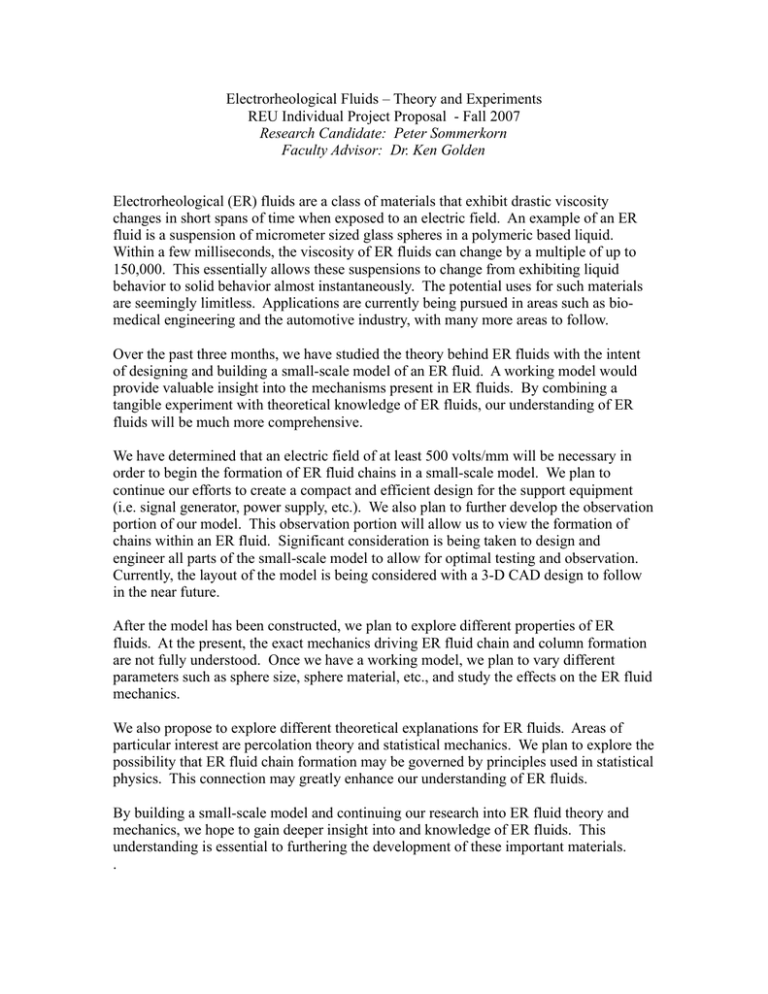
Electrorheological Fluids – Theory and Experiments REU Individual Project Proposal - Fall 2007 Research Candidate: Peter Sommerkorn Faculty Advisor: Dr. Ken Golden Electrorheological (ER) fluids are a class of materials that exhibit drastic viscosity changes in short spans of time when exposed to an electric field. An example of an ER fluid is a suspension of micrometer sized glass spheres in a polymeric based liquid. Within a few milliseconds, the viscosity of ER fluids can change by a multiple of up to 150,000. This essentially allows these suspensions to change from exhibiting liquid behavior to solid behavior almost instantaneously. The potential uses for such materials are seemingly limitless. Applications are currently being pursued in areas such as biomedical engineering and the automotive industry, with many more areas to follow. Over the past three months, we have studied the theory behind ER fluids with the intent of designing and building a small-scale model of an ER fluid. A working model would provide valuable insight into the mechanisms present in ER fluids. By combining a tangible experiment with theoretical knowledge of ER fluids, our understanding of ER fluids will be much more comprehensive. We have determined that an electric field of at least 500 volts/mm will be necessary in order to begin the formation of ER fluid chains in a small-scale model. We plan to continue our efforts to create a compact and efficient design for the support equipment (i.e. signal generator, power supply, etc.). We also plan to further develop the observation portion of our model. This observation portion will allow us to view the formation of chains within an ER fluid. Significant consideration is being taken to design and engineer all parts of the small-scale model to allow for optimal testing and observation. Currently, the layout of the model is being considered with a 3-D CAD design to follow in the near future. After the model has been constructed, we plan to explore different properties of ER fluids. At the present, the exact mechanics driving ER fluid chain and column formation are not fully understood. Once we have a working model, we plan to vary different parameters such as sphere size, sphere material, etc., and study the effects on the ER fluid mechanics. We also propose to explore different theoretical explanations for ER fluids. Areas of particular interest are percolation theory and statistical mechanics. We plan to explore the possibility that ER fluid chain formation may be governed by principles used in statistical physics. This connection may greatly enhance our understanding of ER fluids. By building a small-scale model and continuing our research into ER fluid theory and mechanics, we hope to gain deeper insight into and knowledge of ER fluids. This understanding is essential to furthering the development of these important materials. .


